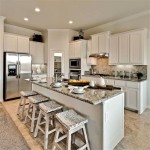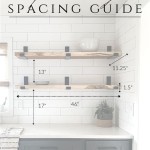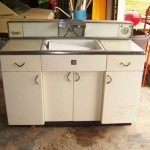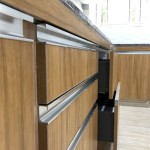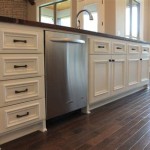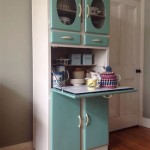Scandinavian Kitchen Design Ideas
Scandinavian design, known for its simplicity, functionality, and connection to nature, translates beautifully into kitchen spaces. This style prioritizes clean lines, light color palettes, and natural materials to create a bright, airy, and welcoming atmosphere. Whether embracing a full renovation or incorporating elements of the style into an existing kitchen, Scandinavian design offers a range of options for creating a stylish and practical culinary haven.
A key element of Scandinavian kitchen design is the emphasis on light. Large windows are favored to maximize natural light, and artificial lighting is carefully planned to supplement during darker hours. White walls and light-colored cabinetry are common choices, reflecting light and creating a sense of spaciousness. Light wood flooring, often in pale oak or ash, complements the bright color scheme and adds warmth to the space.
Functionality is paramount in Scandinavian design. Every element serves a purpose and is designed to be both practical and aesthetically pleasing. Streamlined cabinetry with minimal ornamentation offers ample storage while maintaining a clean, uncluttered look. Open shelving is frequently incorporated, providing easy access to frequently used items and showcasing decorative elements. Integrated appliances help maintain the smooth, minimalist aesthetic.
Natural materials play a crucial role in achieving the signature Scandinavian look. Wood is a dominant material, used for flooring, cabinetry, countertops, and furniture. Stone, such as granite or marble, is another popular choice for countertops and backsplashes, adding a touch of elegance and durability. Natural textiles, like linen and wool, are incorporated through curtains, rugs, and seat cushions, adding texture and warmth.
Color palettes in Scandinavian kitchens typically revolve around neutral tones. White is a staple, used as a backdrop to highlight other design elements. Shades of grey, beige, and pale pastels are often incorporated to add subtle color and depth. Black accents, such as hardware or lighting fixtures, can create a striking contrast against the lighter backdrop.
Minimalism is a core principle of Scandinavian design. Clutter is avoided, and surfaces are kept clean and clear. Decorative elements are used sparingly, focusing on functional pieces that also add aesthetic value. Plants, natural wood accessories, and simple artwork can enhance the space without overwhelming it.
Incorporating Scandinavian design elements into an existing kitchen can be achieved through several updates. Replacing cabinet hardware with sleek, black or brushed metal options can create a noticeable difference. Adding open shelving to display a curated collection of dishes and glassware can introduce a touch of Scandinavian style. Swapping out existing lighting fixtures for minimalist pendants or sconces can enhance the overall aesthetic.
Choosing the right furniture is crucial for achieving a cohesive Scandinavian look. Dining tables and chairs should be crafted from natural wood, with simple, clean lines. Benches can be used instead of chairs to create a more casual and space-saving dining area. Bar stools with wooden or metal frames and upholstered seats can complement a kitchen island.
Accessorizing a Scandinavian kitchen requires a thoughtful approach. Avoid over-decorating and focus on functional pieces that add visual interest. Wooden cutting boards, ceramic bowls, and linen tea towels can be displayed on open shelving. A simple vase with fresh flowers or a potted plant can bring a touch of nature indoors. Artwork featuring minimalist designs or natural landscapes can enhance the overall aesthetic.
When designing a Scandinavian kitchen, consider the layout and flow of the space. An open-plan layout is often preferred, connecting the kitchen to the dining and living areas. This creates a sense of spaciousness and promotes social interaction. The kitchen work triangle, connecting the sink, stove, and refrigerator, should be optimized for efficiency and ease of movement.
Sustainability is an important consideration in Scandinavian design. Choosing eco-friendly materials, such as sustainably sourced wood and recycled countertops, can reduce the environmental impact. Energy-efficient appliances and lighting can help minimize energy consumption. Composting food waste and using reusable containers can further contribute to a sustainable lifestyle.
Scandinavian kitchen design offers a timeless and versatile aesthetic that can be adapted to various spaces and budgets. By focusing on light, functionality, and natural materials, it is possible to create a kitchen that is both beautiful and practical. Whether embracing a full renovation or incorporating select elements of the style, Scandinavian design provides a framework for creating a welcoming and inviting culinary space.
/1-scandinavian-kitchen---header-image-640w-360h.jpg?strip=all)
How To Design A Scandinavian Kitchen Blanco
/what-is-scandinavian-kitchen-style-image-640w-480h.jpg?strip=all)
How To Design A Scandinavian Kitchen Blanco

9 Scandinavian Kitchen Designs For Your Home Designcafe

75 Scandinavian Style Kitchen Ideas Photos Modern Marble Island Large Kitchens

10 Scandinavian Kitchen Design Ideas For 2024

10 Ways To Decorate Your Kitchen Using Scandinavian Design

Wonderful 33 Rustic Scandinavian Kitchen Designs De Design Galley Renovation

50 Scandinavian Kitchen Design Ideas For A Stylish Cooking Environment
/scandinavian-kitchen---colours-image-640w-480h.jpg?strip=all)
How To Design A Scandinavian Kitchen Blanco

8 Stunning Scandinavian Kitchen Examples Inspiring Photos

